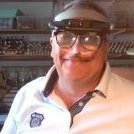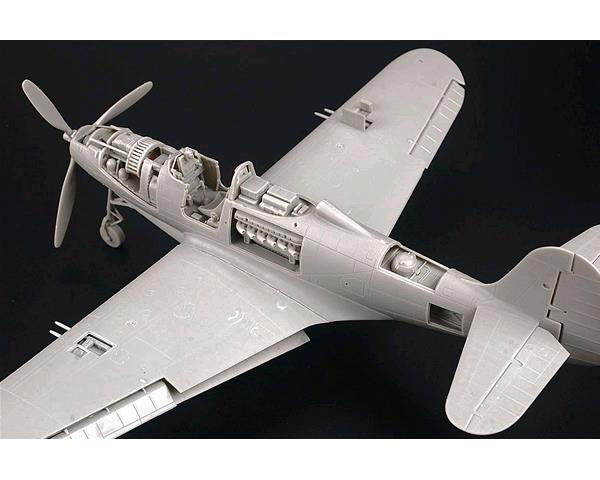-
Posts
2,979 -
Joined
-
Last visited
Content Type
Profiles
Forums
Events
Gallery
Everything posted by HubertB
-
+1 ! Hubert
-

Israeli Mirage III C with Atar9C
HubertB replied to Kaireckstadt's topic in LSM 1/35 and Larger Work In Progress
Is it done yet ? Hubert- 719 replies
-

Israeli Mirage III C with Atar9C
HubertB replied to Kaireckstadt's topic in LSM 1/35 and Larger Work In Progress
Is it done yet ? Hubert- 719 replies
-
- 1
-

-

So the move is coming a little slower than expected.....
HubertB replied to ScottsGT's topic in General Discussion
Hard life indeed Scott … Having gone through a number of moves, I have now a simple rule: everything that must be done in a house, unpacked, hanged, set-up is done within 4 weeks of the move. When the 4 weeks are over, that’s it ! What’s not done by then will not be done, and not unpacked will not be unpacked. It’s intense, but so satisfying afterwards. Our last move was last year in the newly-built house. In fairness, I had done some prep work in the room that serves as workshop/attic, by hanging shelves there before the move started. But the move started on Sept 27th, and we were fully settled by October 13th. And in case you are wondering, the move was 120 cubic meters. That’s almost the volume of 2 40’ containers, if you are looking for a comparison. Hang tight Scott, you’re almost there (emptying the scotch bottle while watching the sunset, I mean ) Hubert -

Short Sunderland MkII
HubertB replied to ThomasProbert's topic in LSM 1/35 and Larger Work In Progress
Hubert -
I, for one, will miss them. Their kits are challenging, but they managed to launch a number of unique kits you would not / cannot expect from the longer-established manufacturers. In fact they make up, with Special Hobby, the bulk of my injected-plastic kits. 10 years ago, I was seriously considering going for the production of resin kits. One of my pet projects was the TBD. When discussing with Glen Coleman about another KH project, he told me they had plans for a 1/32 TBD. Now, THIS ONE I will sorely miss, at par with the Trumpeter release Hubert
-
Great progress Peter, keep it coming . One of the worst fitting areas I believe is the rear spine panel, where R2D2 is located … Hubert
-
Fair point on the way it could fracture. And no, I don’t work for an insurance company, but own an industrial one, where testing the compressed air tank every 10 years is a regulatory obligation. And, even with an automatic purge system, I just changed the tank before its 30th birthday, together with the compressor. Hubert
-
The problem is that rust means a weaker tank ... and gravity has concentrated the water at the bottom of the tank, which has rusted more, so the weaker and thinner metal is in this area. There is a significant risk to keep using a 30-years old rusted tank with a pressure that goes up to 8 kg/cm2. The risk is real of an explosion, and that means shrapnel flying in a closed room. Not something I’d like to experience ... Hubert
-
My nose-flattening-on-the-shop-window kit was the Revell 1/96 Constitution... It’s also the first kit I bought when I discovered eBay. Good old times when you could get a kit the size of the Constitution shipped for less than the price of the 747 or 20000-boxes container ship that carries it Hubert
-

What is on your bench right now ? Share a picture :)
HubertB replied to Martinnfb's topic in Modelling Discussion
Multiple Anxiety Syndrome Alert ... the most accute syndrome of them all ! -

What is on your bench right now ? Share a picture :)
HubertB replied to Martinnfb's topic in Modelling Discussion
At least those never run out of batteries when you need them Hubert -

What is on your bench right now ? Share a picture :)
HubertB replied to Martinnfb's topic in Modelling Discussion
You guys are having a bad influence ! See ? My bench is all cluttered now ! Hubert -
Looks like you, Phil and I are of the same generation, James . I, too, built the Airfix Whirlwind a loooong time ago, and have kept my love for it since. And, yes, I had to jump on this one as soon as it was available, for this same reason . Thank you for the review, James. It’s a vey nice kit indeed. As per my usual standards, I’ll have it in a civilian scheme. Kudos to SH for a bold move. They deserve a genuine success for this non-mainstream initiative. Hubert
-

Fw190A-8 3/JG1 crash Vreeland
HubertB replied to JeroenPeters's topic in LSM 1/35 and Larger Work In Progress
Impressive work as always, Jeroen. Hubert -

Share how COVID-19 Quarantine has affected you.
HubertB replied to 1to1scale's topic in General Discussion
If you listen to all the doomsayers on the net, you’d better sit down right where you are and wait for the Apocalypse, and the sky, and death to fall on your head, and from what I read from all the deskchair experts, that should be pretty soon . Truth is, although some have suffered unexpected and severe side-effects from the vaccine, the benefit-risk ratio is vastly in favour of the vaccine. Whilst the vaccine does not protect you from an infection (what it does is prepare your body for it so that the immune system reacts faster, stronger and more efficiently to it), it is now proven that it definitely prevents any accute form of infection. It also makes you 10 times less susceptible to transmit the virus to others, in effect reducing the epidemic spread from a wave to a dribble. In short, you are still more likely to die from most causes than from an AZ jab. The size of the pandemic combined with the unprecedented extent of social media, has unfortunately opened the floodgates to all kinds of conspiracy theories, false information, ill-intended rumours, etc. Even the media, in their quest to generate viewership to then sell advertising have thrown the basic rules of journalism to the winds and participate in this doomsday movement ... Pasteur must be spinning in his grave hearing all the anti-vax proponents. Btw, I am not infering that you are anti-vax. I am just saying that the AZ vaccine is as safe as an active medicine can be: not 100 %, but the risks are so low so not to be a real « no-go » factor. Like the Janssen, it is also infinitely easier than the Pfizer and Moderna in terms of logistics. I got my AZ jab last Saturday, btw, with not even a small side-effect. But some of my close friends had a far more accute reaction, with symptoms like fever, headache, vomiting, etc. Hubert -
As the husband of a woman who went though this 5 times (all different cancers), I can fully subscribe to your joy. EXCELLENT news ! Hubert
-
+1 ! Hubert
-
WOW ! Hubert
-
Although not the first one released by KH, the P-39 was actually the first one they designed. KH are notable for their somewhat approximative fit but their kits have improved release after release, with the latest ones fiddly but not bad in terms of fit. This to say that the P-39 is actually a ... let’s put it mildly ... challenge ? Hubert
-
+1, what they said ! Hubert
-

Two little Brewsters, now a Buddy Build.
HubertB replied to Clunkmeister's topic in LSM 1/35 and Larger Work In Progress
The R-1820 design went through a number of iterations. On the -F, the ignition ring was definitely behind the pushrods’ tubes. On the early -G as well. Then, it changed, but I am still struggling to find on which version this happened. Ditto for the cylinders’ finning. As time progressed, and metallurgy and production techniques improved, as well as the octane level of fuels increased their energy density, the number of fins grew significantly to dissipate the extra-heat. I think I remember reading somewhere that the cooling area was multiplied by 5 (at least) over the life-time of the 1820. On the color pic above, the cylinder is definitely a late design. It looks like a B-17 engine at first glance. Definitely not the right one for a Buffalo ! -

Two little Brewsters, now a Buddy Build.
HubertB replied to Clunkmeister's topic in LSM 1/35 and Larger Work In Progress
I agree with you about the qualities of the bird, Ernie, at least the -1 version before it got overloaded with a wing area that was not very big to start with (on the other hand, with hindsight of 80 years of various conflicts, any aircraft designer should now KNOW that the original spec will be overpassed by combat demands, and weight will increase. Reminds me of the debate between European countries at the time of the Rafale/Lightning specs' writing. Dassault wanted the bare aiframe 1 ton lower than their British / German counterparts : they ended up going separate ways). The only thing that always looked a potential area for trouble in my layman's eyes was the undercarriage design. I always felt it looked way to flimsy to be slammed regularly on the planks of an aircraft carrier. But then again, with hindsight, one can become the smartest a@#&&.e in the word Hubert




